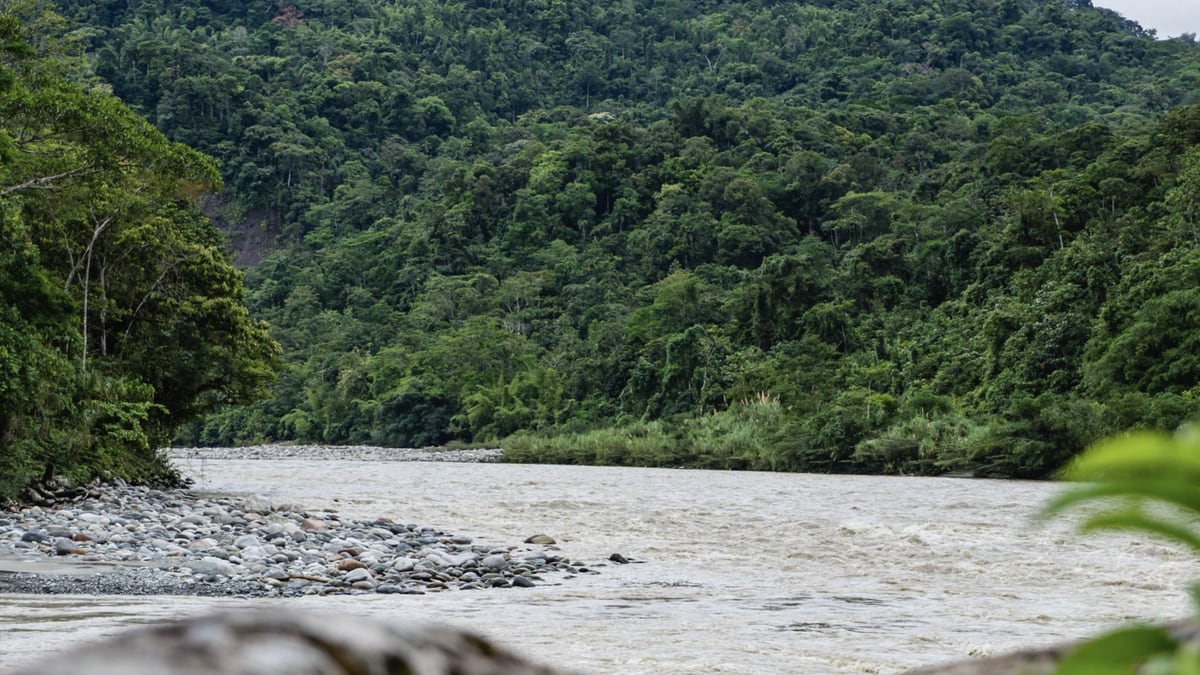Sea level drops in Iceland due to global warming 0:54
(CNN Spanish) -
Millions of people around the world are threatened by rising sea levels that, along with other factors, could take entire cities along this century.
From North America to Asia, alarm bells are ringing.
What happens in Latin America?
We show you here some of the areas that could be under water by the year 2100, according to a model published by the Climate Central organization.
Estimates of sea level rise have evolved over the years.
What happens will depend, among other factors, on rising temperatures on Earth (which in turn is linked to greenhouse gas emissions).
Ricardo Álvarez: climate change has accelerated 2:19
In this framework, a Climate Central study published in 2019 in the journal
Nature Communications
calculated that this increase will be between 0.6 and 2.1 meters over the course of this century, a much higher figure than previous estimates.
That implies that, by the year 2100, the land on which 200 million people live could be practically uninhabitable.
This non-profit organization produced a map that makes it possible to visualize the threat of rising sea levels and shows that Latin America is not left out.
We show you here some of the places that could permanently fall below the high tide line by 2100.
More human remains discovered in Lake Mead as reservoir water levels drop
The map of Latin America
Mexico: coastal areas in the Yucatan peninsula
Both the west and east coast of Mexico are threatened by rising sea levels.
According to the projection of Climate Central, in less than 80 years, parts of the Yucatan Peninsula could be below the water level.
Land in Quintana Roo, Yucatán, Campeche and Tabasco would be affected.
Red indicates the area that could fall permanently below the high tide line by 2100. Source: Climate Central.
Going west, the threat is seen primarily along the coasts of Sonora, Sinaloa, and Nayarit.
The Nicaraguan and Honduran coasts
Nicaragua and Honduras are two of the countries in the region that know firsthand what it means to deal with the consequences of global warming, which makes hurricanes more dangerous.
On the eastern coasts of both countries, areas that could remain under water as a result of rising sea levels are identified.
Red indicates the area that could fall permanently below the high tide line by 2100. Source: Climate Central.
The study published in 2019 precisely warns that “coastal communities around the world must prepare for much more difficult futures than can currently be anticipated.”
Colombia: Barranquilla area
In Colombia, two areas stand out: one near Barranquilla (the mouth of the Magdalena River in the Caribbean Sea) and another towards the border with Panama (the Gulf of Urabá).
Red indicates the area that could fall permanently below the high tide line by 2100. Source: Climate Central.
Venezuela: the coast around Lake Maracaibo
As can be seen on the map below, in the case of Venezuela there are identifiable foci around Lake Maracaibo and Tucupita.
If one follows the path to the east and south, the threat is also visible in Guiana, Suriname and French Guiana.
Red indicates the area that could fall permanently below the high tide line by 2100. Source: Climate Central.
It is worth mentioning that the study mainly highlighted the potential risks in Asia, because about 70% of the people at risk of annual and permanent flooding are in eight Asian countries: China, Bangladesh, India, Vietnam, Indonesia, Thailand, the Philippines and Japan.
Brazil: a threat from north to south
Brazil, with its more than 7,000 kilometers of coastline on the Atlantic Ocean, faces threats as far north as the state of Amapá and as far south as the state of Río Grande do Sol. Some of the areas that could fall under high tide line permanently are close to key cities such as Porto Alegre and Rio de Janeiro.
Statue of a submerged girl seeks to raise awareness 1:01
And speaking of Rio de Janeiro, a note: in recent years the danger facing the famous Copacabana beach due to rising sea levels has become evident.
And it is far from being the only one threatened.
A 2020 study published in
Nature Climate Change
claims that half of the world's beaches could be gone by the end of the century.
Uruguay: the east coast, home to some of the most valued tourist spots
If we continue south and cross the Brazilian border, we can see that the east coast of Uruguay also has threatened points, in the departments of Rocha and Maldonado, for example, which are recognized worldwide for some of their cities and beaches such as Punta del East or Cape Polonium.
Just as it happens in the north, in several cases this increase in level would impact the surroundings of lagoons or other bodies of water.
Greenland melting threatens sea level 0:53
Argentina: outbreaks in the provinces of Entre Ríos and Buenos Aires
Among the various points that can be seen in Argentina, two areas stand out: one in the province of Entre Ríos, where rivers such as the Ibicuy and the Paraná flow, and one in the province of Buenos Aires, at the height of the Samborombón bay.
Red indicates the area that could fall permanently below the high tide line by 2100. Source: Climate Central.
What causes sea level rise?
Behind the rise in sea level is a reality that we hear more and more about: global warming.
This phenomenon causes the water level to rise for two reasons, according to the United States Oceanic and Atmospheric Administration (NOAA).
On the one hand, it contributes to the melting of ice caps and glaciers and, on the other, "the volume of the ocean expands as the water warms."
The agency mentions another phenomenon that also contributes to sea level rise, although to a lesser extent, which is "a decline in the amount of liquid water on land," referring to lakes, reservoirs and aquifers, among others.
"This displacement of liquid water from the land to the ocean is largely due to the pumping of groundwater," he explains.
In addition to groundwater pumping, other factors that aggravate the effects of sea level rise are the extraction of materials from the soil and the production of sediments that are occurring near the coasts and cause the land to sink.
Editor's Note: This article was originally published in 2021.
sea level riseClimate changeInstaNews





/cloudfront-eu-central-1.images.arcpublishing.com/prisa/67ULYPVUPVBKREGACL4UVH4JH4.jpg)

/cloudfront-eu-central-1.images.arcpublishing.com/prisa/D6BPFYE4B5FMJAMYWLMWT3HYGQ.jpg)

